Climbing up the Acropolis: Visiting Athens’ Most Famous Sight
In this destination guide, we will visit the Acropolis and Acropolis Museum in Athens, Greece.
Plaka
Arguably the most awe-inspiring sight of all of Athens is the Acropolis, one of the world’s most important ancient sites.
It’s not only for historical reasons that the Acropolis has such a dominant position. The Acropolis hill literally is dominating the Athens skyline.
Wherever you walk in the city centre of the Greek capital, chances are that you will have some good views of the Acropolis and the ancient Greek temples on top of it.
Especially when you explore the old town streets of Plaka or find yourself on Monastiraki square, you will have some gorgeous view of the Acropolis.
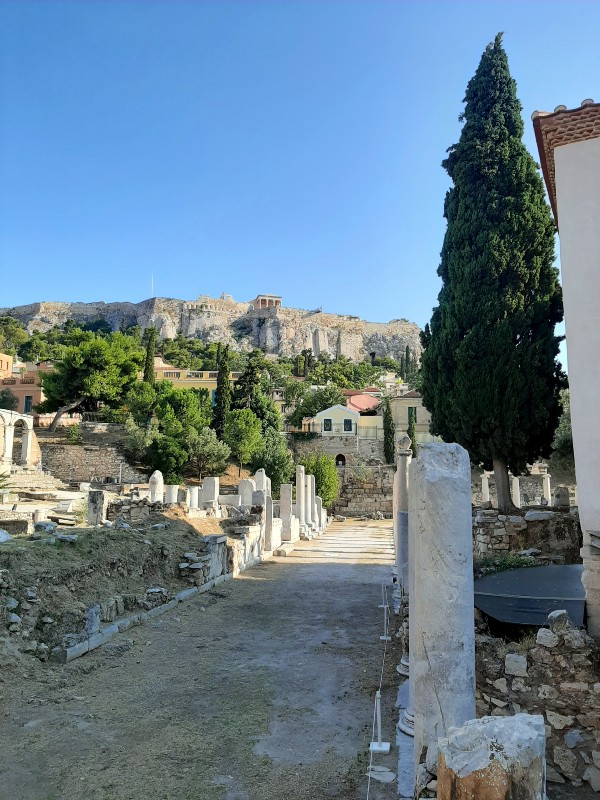

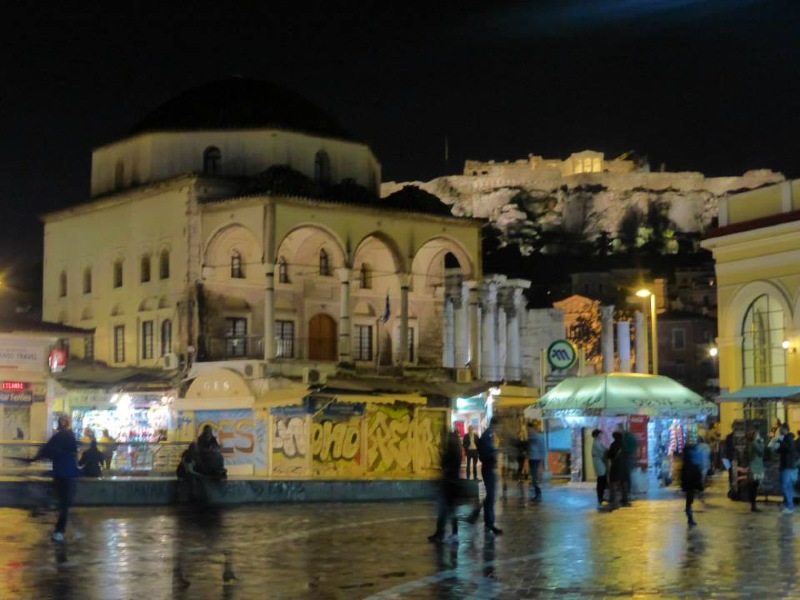
Climbing up
Although you could of course admire the Acropolis from afar, it is arguably a must-do activity to climb all the way up on the hill and to admire the ancient temples and buildings from up close.
There are dozens of archaeological sites on top of the hill and on the slopes.
Although most of the sites are located on the southern slope, you can access the Acropolis from both the north and south side.
Ticket prices
At the time of writing (2020), entry tickets to the Acropolis are as following:
– Full price adult ticket: 20 euro
– Off-season adult ticket: 10 euro (for visits between 1st November and 31st March)
A special 5-day ticket package costing 30 euro is also available, which besides the Acropolis also grants you access to a couple of more archaeological sites in Athens such as the ancient agora, Roman agora, Olympeion (sanctuary of Olympian Zeus) and many more.
Edit 9-4-2025: A full-fare entrance ticket to the Acropolis for an adult, previously priced at €20, will now cost €30. You can buy your Acropolis ticket and reserve a time slot for your visit (which is compulsory!) on the Hellenic Heritage website, the official site of the Greek Ministry of Culture, where you can buy online tickets for archaeological sites across the country. More about the most recent Acropolis ticket prices and discounts can be read here.
Free entry
EU nationals under the age of 25 can get free access to the Acropolis upon presentation of a national ID card or passport. The same counts for children under the age of 5 from non-EU countries.
This generous policy counts for all archaeological sites and museums owned by the Greek state.
Free access is also given to certain categories of students, teachers, journalists and disabled persons irrespective of the country they hail from.
For a full version of who is entitled to free access, the Greek Ministry of Culture has a detailed PDF file in which all categories are listed and what kind of document you have to show at the ticket booth in order to receive free entry.
On the following days, everyone can visit the Acropolis (as well as other state-owned sites and museums) for free:
– 6th March (in memory of Melina Mercouri)
– 18th April (International Monuments Day)
– 18th May (International Museums Day)
– The last weekend of September (European Heritage Days)
– 28th October (Oxi Day)
– Every first Sunday of the month from 1st November until 31st March
Disabled access
In the past, climbing up the Acropolis was only possible for those fit enough to navigate the small paths and steps up to top some 150 metres (490 ft) above sea level.
This year, an elevator has been inaugurated and paths on top of the plateau have been made accessible for wheelchairs, which means that now everyone can visit the Acropolis.
New Acropolis lift a first step in plan for improving accessibility https://t.co/bgfGOtKlQX pic.twitter.com/ZIa6eJ82NM
— Kathimerini English Edition (@ekathimerini) December 4, 2020
Acropolis history
Having such a commanding position, it was only natural for mankind to settle on top of the Acropolis hill as the steep gradients of the rock made for a natural fortress.
It was first inhabited in Neolithic times (4000 to 3000 BC) with the first temples to honour the goddess Athena being built in the Mycenaean era (1600 – 1100 BC).
People lived on top of the Acropolis until the Oracle of Delphi declared that the hill should become the domain of the Gods in 510 BC.
After the buildings and temples on the Acropolis suffered severe damage when Athens was ransacked by the Persians just before the famous Battle of Salamis, the great Greek statesman Pericles oversaw a massive rebuilding programme, turning the Acropolis into a collection of great temples.
The era of Pericles perhaps marked the heydays of Classical Greek culture and society.
Afterwards, both Athens and the Acropolis went into a slow, gradual decline as Greece was occupied by foreign powers such as the Romans and – much later – the Ottomans.
The Acropolis suffered immense damage in 1687 when the Venetians fired their cannons on the Ottoman positions on the hill.
It caused a massive explosion in the Parthenon, which was used by the Turks to store their gunpowder.
Although the temple ruins on the Acropolis may not reflect their past glory, they have been painstakingly renovated in recent decades.
Parthenon
The Acropolis is almost synonymous with the Parthenon which crowns the rocky plateau.
Parthenon, meaning ‘virgin’s apartment’, is dedicated to Athena and is the largest Doric temple to have ever been built in Greece.
It took the Athenians 15 years to complete the temple, which columns and walls were created out of marble (only the roof was made from wood).
The pediments depict mythical events of the Greek deities as well as battle scenes such as the famous siege of Troy.
Other beautiful temples on the Acropolis are the Propylaia, which forms the entrance point to the top of the Acropolis, and the exquisite temple of Athena Nike.
The Erechteion, with its Temple of Poseidon on the northern side and the famous Porch of the Caryatids with its fine statues on the south side, makes for another Acropolis highlight.
While the Parthenon was more of a showcase building, the actual worshipping of the Gods took place at the Erechteion, which had more of a classical sanctuary role.
Another highlight of the Acropolis are of course the sweeping views over Athens in all directions.
From the hilltop you really get a good feel what a sprawling city Athens has become.




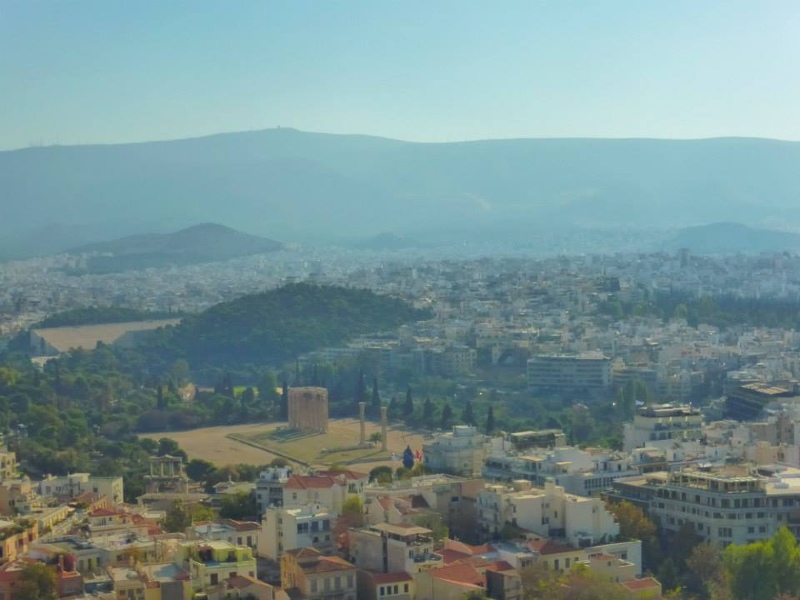

Hillside
There are some more blockbuster sights on the southern slopes of the Acropolis.
On the southern slopes, you can find two majestic theatres: The Odeon of Herodes Atticus and the Theatre of Dionysos.
Although it is the most decayed, the Theatre of Dionysos used to be the most important theatre of ancient Athens, easily holding 17,000 spectators during plays.
The Odeon of Herodes Atticus, built in 161 AD by a wealthy Greco-Roman politician to honour his deceased wife, is much better preserved.

What is the best time to visit the Acropolis?
Obviously, you want to avoid the hottest parts of the day when the sun is at its highest point, especially in the summer months.
There is almost no shade on top the Acropolis, so make sure you also bring some water with you on your climb up.
Visiting the Acropolis as early as possible is the best, as most visitors are yet to arrive and the temperature is still relatively low.
However, already later in the morning, the Acropolis will be at its busiest as by then most of the tour group crowds will have arrived.
If visiting right at hour of opening (8am in high season, 8.30am in low season) is too early for you, it makes perhaps more sense to visit in the late afternoon instead to avoid the crowds.
Where do you have the best Acropolis view?
Although climbing up the Acropolis is definitely worth it, it is perhaps the view from afar which will leave a more lasting memory.
Many bars, restaurants and hotels on both sides of the Acropolis hill offer (partial) Acropolis views.
Of course, hotels and restaurants with Acropolis views will often come at a premium. Whether or not this is worth it, is up to you.
You don’t necessarily need a rooftop restaurant or hotel room with a view to make a good picture of the Acropolis as the hill is visible from almost every corner of the city centre.
For the best views, follow the locals to Areopagus Hill just to the south-west of Monastiraki.
On this rocky outcrop, there are some fine views over the Acropolis, both by day and night.
In the evening hours, the rock is especially popular among young Athenians to sit down with a can of beer.

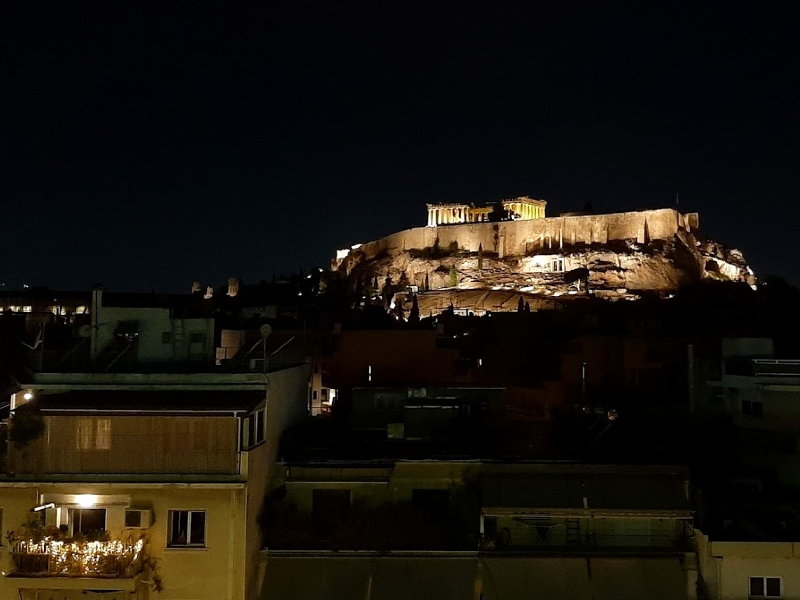
Acropolis Museum
Just south of the Acropolis you will find the Acropolis Museum in a striking modern building.
This museum makes for an excellent addition to an Acropolis visit as it has some fine exhibits with ancient artefacts from the site.
The Acropolis Museum costs 10 euro in high season and 5 euro during the low season.
Young persons, students and senior citizens may be eligible for a discount or free admission.
However, don’t forget that Athens has a big number of other excellent museums (Archaeological Museum, Benaki Museum, Cycladic Art Museum) which are also well-worth a visit.
If you are short on time and can only visit one museum, I would personally opt for a visit to the Archaeological Museum instead of the Acropolis Museum.
Although certainly not as sleek and state-of-the-art as the Acropolis Museum (and perhaps even a tad bit old-fashioned), the Archaeological Museum is larger, has more objects and gives a better generic overview of Ancient Greek history in my opinion.

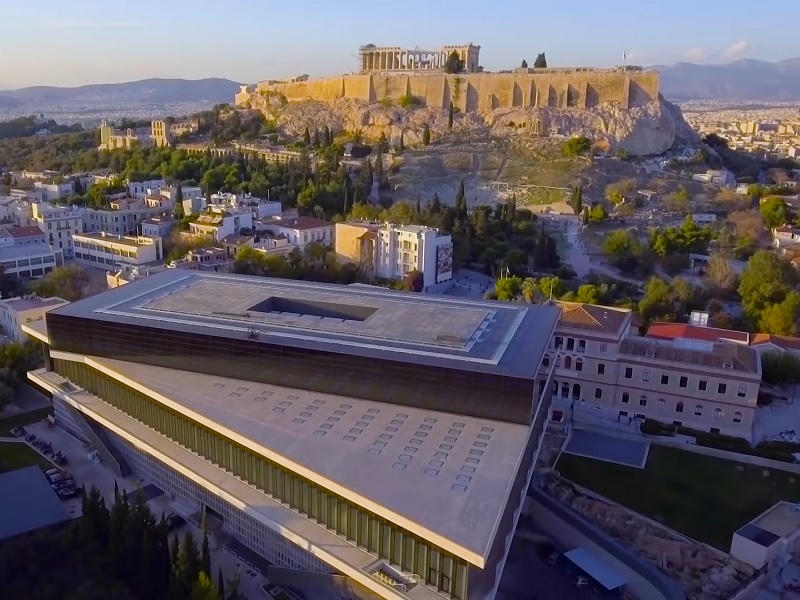
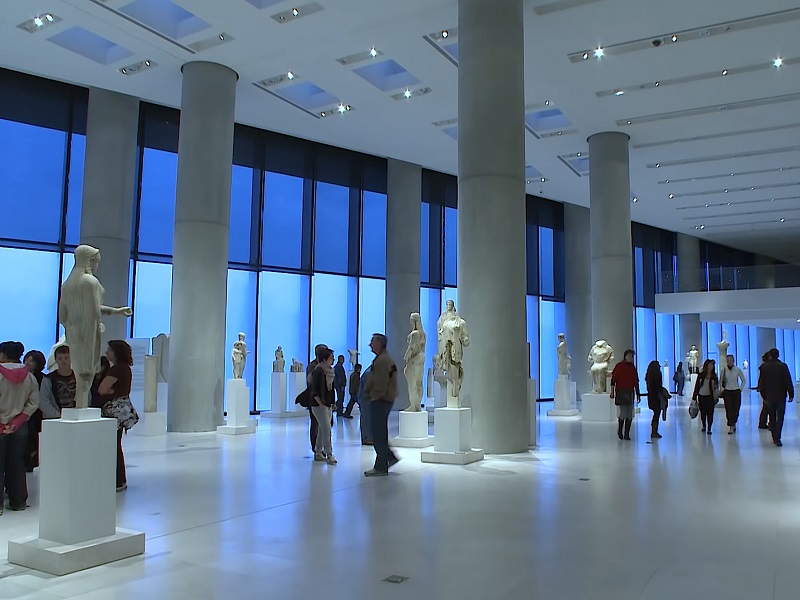
In short
The Acropolis dominates Athens – both literally speaking and figuratively when looking back at the glorious history of Ancient Greece.
The rocky hill with its temple ruins on top can be seen from all over central Athens and makes for one of the most famous landmarks in the world.
It’s well worth it to climb to the top in order to admire the Parthenon, Erechteion, Odeon of Herodes Atticus and other sights from up close.
A visit to the Acropolis should ideally be combined with a visit to the state-of-the-art Acropolis Museum with its gorgeous exhibitions and galleries.
If you even have the slightest history in Greek culture or ancient history, you really cannot ignore the Acropolis.
Trip report index
This article is part of the ‘A Dodecanese Dream: Summer Island Hopping in Greece‘ trip report, which consists of the following chapters:
1. Back in the Skies – My First International Flight in the Age of Corona
2. Review: Kimon Hotel, Athens, Greece
3. Exploring Plaka: Through the Winding Streets of the Old Town of Athens
4. Climbing up the Acropolis: Visiting Athens’ Most Famous Sight (current chapter)
5. Review: Skyserv Melina Merkouri Lounge Athens Airport
6. Review: Sky Express Athens to Naxos (ATR 42)
7. Review: Studios Zafiri, Naxos Town, Greece
8. Naxos Town: The Gorgeous Historic Heart of the Cyclades
9. Review: Blue Star Ferries Naxos to Astypalea
10. Review: Belvedere Studios, Astypalea Town, Greece
11. Astypalea Town: The Unknown Crown Jewel of the Aegean Sea
12. Astypalea Island Guide: Exploring the Butterfly of the Aegean
13. On a Night Boat in Greece – Astypalea to Kastellorizo With Blue Star Ferries
14. Review: Traditional Apartments Alexandra, Kastellorizo, Greece
15. Kastellorizo: A Look Around Greece’s Easternmost Island
16. Hiking on Kastellorizo: Two Sunset Hikes Detailed
17. Review: Olympic Air Kastellorizo to Rhodes (Dash 8-100)
18. Guide: How to Travel From Rhodes to Halki by Ferry
19. Review: Dorothea Apartments, Halki, Greece
20. Halki Town: Eating, Swimming & Relaxing in Beautiful Emborios
21. A Hike to Horio: Exploring Halki’s Old Abandoned Capital
22. Guide: The Best Beaches on the Island of Halki
23. Review: Hermes Hotel, Rhodes Town, Greece
24. A Visit to the Delightful Old Town of Rhodes
25. Review: Aegean Airlines Domestic Flight Rhodes to Athens
26. End of a Dream Holiday in Greece: One Last Day in Athens

